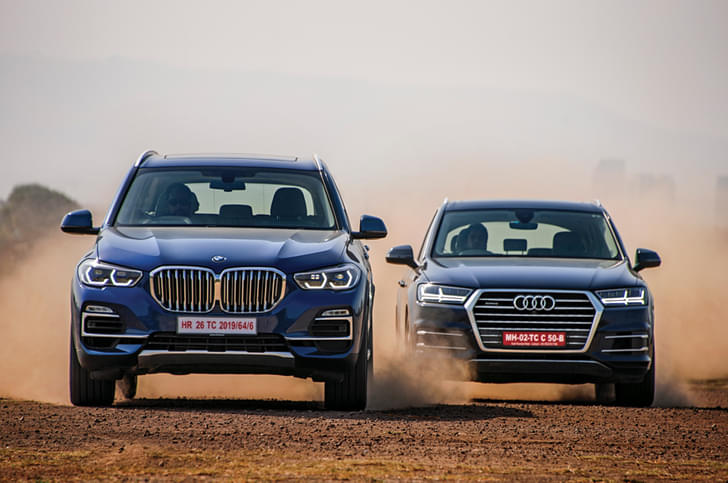The MG Hector is the launch pad for an all-new brand in India and the impression it makes will set the tone for how the brand is perceived henceforth. Well, that first impression seems to have been a strong one, because the Hector managed to rack up over 21,000 bookings in just six weeks after its launch, and bookings for the SUV have been put on hold for now.
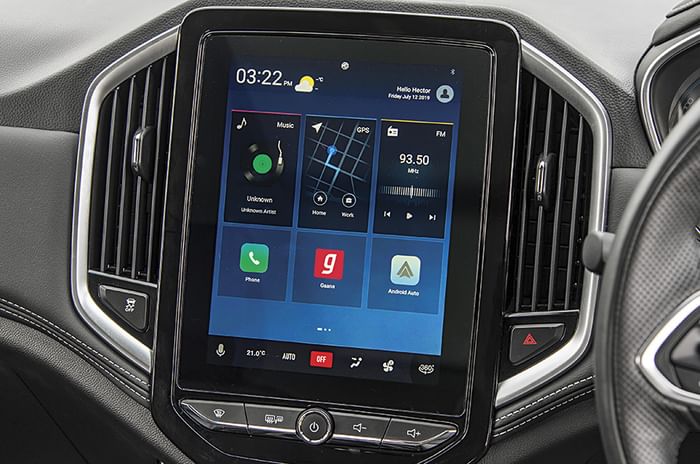
The Harrier is another car launched in uncharted territory. With its Land Rover-sourced underpinnings and upmarket appointments, it’s a Tata car that truly pushes into the premium zone, breaking new ground for the Indian brand. It might not have bagged bookings quite as quickly as the Hector, but it’s selling steadily despite the fresh onslaught of SUVs. The slower movement might be because, unlike the wide range of Hectors on offer, it’s available with just a single powertrain configuration – diesel-manual – and so that’s the spec we’re considering for this test. But which of these two should you put your money on? Read on to find out.
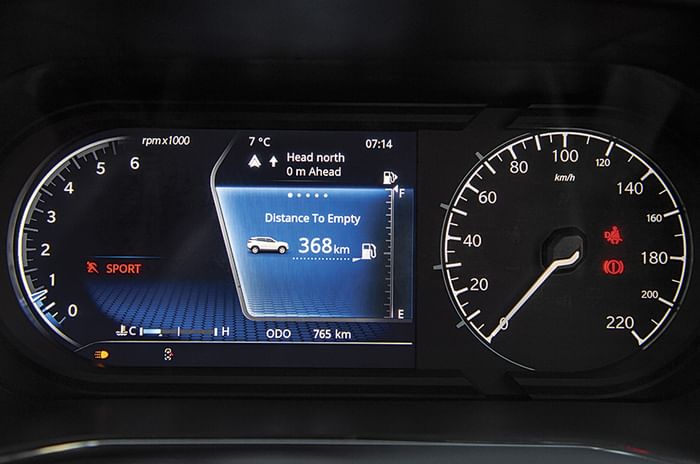
LOOK-SMART
Say what you will about its weedy 217/60 R17 tyres and its long overhangs, you can’t deny that the MG Hector is a bold-looking vehicle. Okay, some details are a bit excessive, but it makes its own unique statement and it is a strong one. The high-set, chrome-rich nose works really well, giving it an imposing presence, and the kinked window line is a nice touch, but there’s another detail I like even more. Because its tail-lamps are located entirely on the tailgate, they lift up when it’s open (like an Audi Q5’s). So for safety, there’s a small, second set of tail-lamps – indicators and reverse lights and all – in the rear bumper that are activated when the tailgate is open.
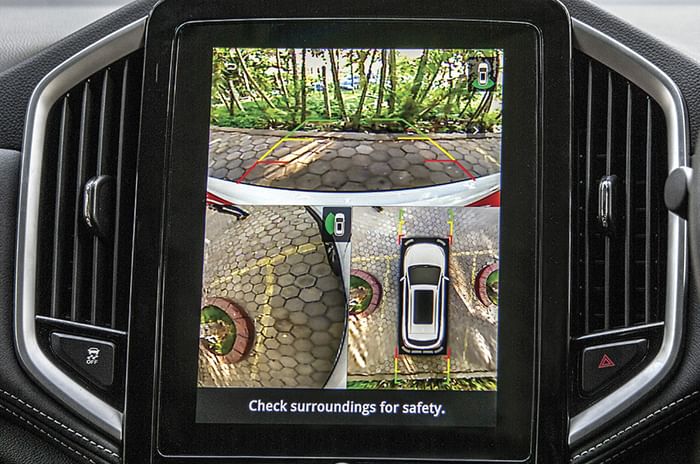
But the Harrier looks just as striking. Unlike the Hector, its overall proportions are just spot on, with chunky tyres filling out the big wheel arches nicely (both cars use 17-inch wheels) but as we’ve said before, the ordinary-looking alloy wheels do take out some of the wow factor.
What really stands out is the interplay of its big, bulging details – like the wheel arches, bumpers and grille – with more delicate stuff – like the slim LED running lamps and tail-lamp cluster. In fact, you might not realise at first but the Harrier is actually a little smaller than the MG!
| Dimensions | ||
|---|---|---|
| Hector | Harrier | |
| Length | 4655mm | 4598mm |
| Width | 1835mm | 1894mm |
| Height | 1760mm | 1706mm |
| Wheelbase | 2750mm | 2741mm |
| Tyre size | 215/60 R17 | 235/65 R17 |
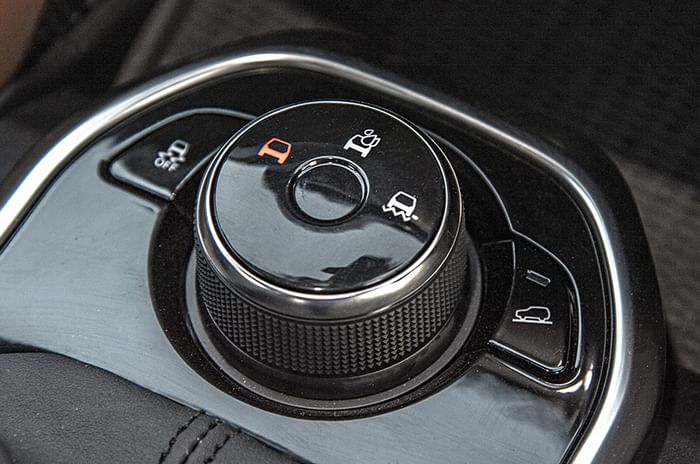
The elegant design carries on inside, where you’ll find a refreshing simplicity to the layout. The dashboard flows horizontally, the ‘slab’ of fake wood is surprisingly convincing, and I like how the HVAC and infotainment controls sit in their own independent binnacles. I like the use of chocolate-brown upholstery – lively enough without becoming prone to stains – the part-digital dials are a techie touch, and there’s even a good amount of storage for knick-knacks. The only real disappointments are the steering wheel, which looks and feels a bit utilitarian in an otherwise modern cabin; the handbrake which, although it looks cool, is quite awkward to operate; and the USB port, which seems to have been deliberately hidden from you.
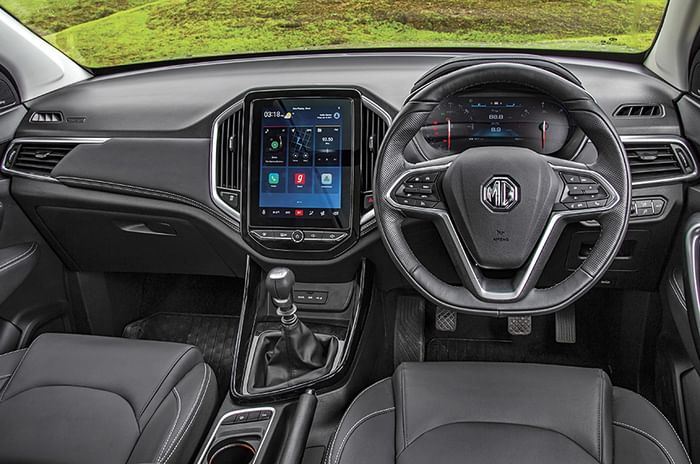
Also, the Hector’s all-black interior might not go down well with some, but it makes up for that with a mix of materials, like brushed-silver accents, piano-black plastic and even a swathe of faux leather
on the dashboard makes a great first impression. No doubt, perceived quality is actually quite good but if you look hard you’ll find some scratchy bits and a general sense that the cabin isn’t perfectly put together. You get that sense in the Harrier as well, which has a few ill-fitting panel gaps.
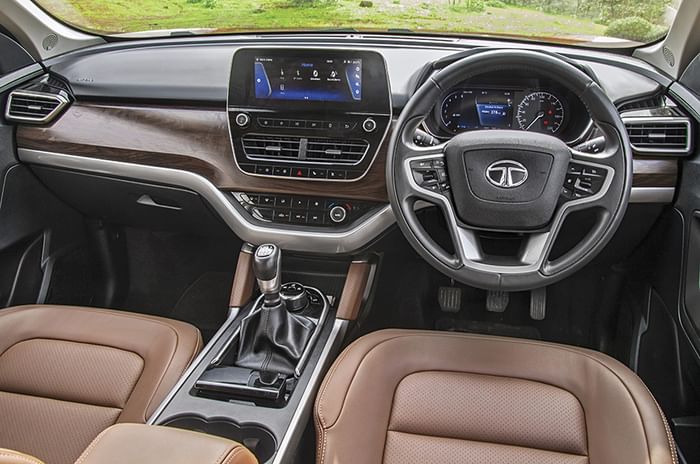
The Hector’s multi-colour ambient lighting is a premium touch and the big draw, of course, is the 10.4-inch portrait touchscreen with a huge array of features. The large screen makes it easy read but the one design flaw is that too many basic functions – even the aircon – can only be operated through the touchscreen; physical buttons are reduced to just volume controls and the windscreen defogger.
It also doesn’t help that it’s slow to respond and load new menus, but then the Harrier’s system is not great on this front either.
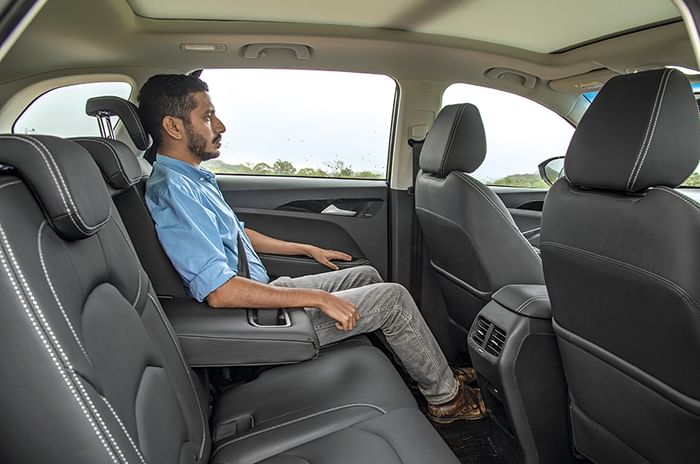
It’s the contents of that touchscreen system that really give the MG an advantage as it is a ‘connected’ car – meaning it has on-board internet, opening up a wide array of functions like geo-fencing, remote locking and unlocking via smartphone, over-the-air updates and even a built-in music streaming app with a premium subscription. The Harrier gets the basics right at least, with Apple CarPlay and Android Auto (also in the MG, of course) and frankly, these are a better way to handle your infotainment needs in both cars.
It’s important to point out neither car’s infotainment system is glitch-free, and both units completely crashed for short spurts during this test drive.
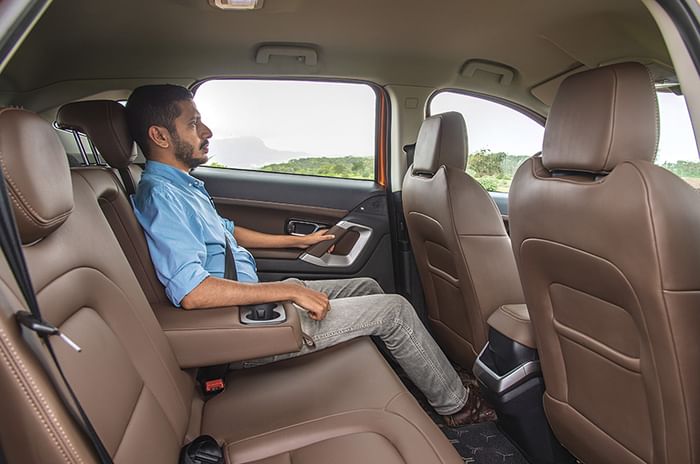
CAVERNOUS
Both cars have big front seats that are comfortable enough, with the MG having the advantage of power adjustment for the driver and passenger. The Hector’s seats have a bit too much lumbar support, however, which can get uncomfortable over long drives, and unlike in the Harrier, this is not adjustable. The Tata gives you a better sense of lording over lesser vehicles on the road, but it’s the MG that really offers better visibility thanks to its larger windows, slimmer pillars and lower dashboard. On this topic, an unforgivable bit of form over function is the Harrier’s huge wing mirrors that are placed so high, they create massive blind spots for the driver.
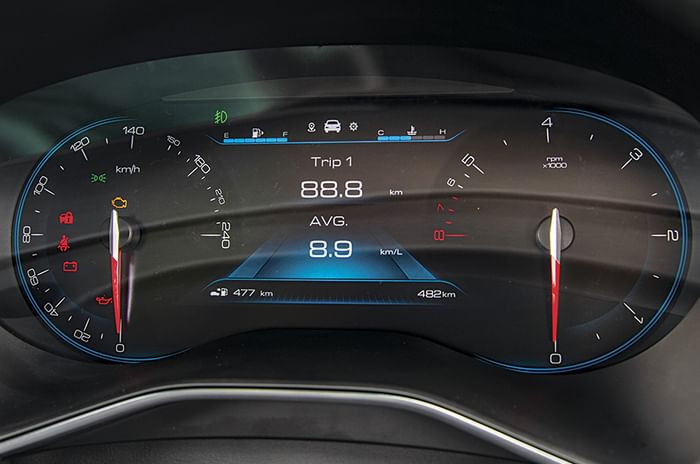
It’s a close contest for best second row as both cars offer tremendous space and good comfort. The MG probably takes it, however, thanks to a flat floor and a backrest that reclines, neither of which the Tata has. In addition to the Hector’s large, low-silled windows, you also get a full-length sunroof for an immense sense of airiness; the Harrier’s lack of any roof opening will cost it a big point to Indian buyers. It does have one advantage, though, and that’s better thigh support.
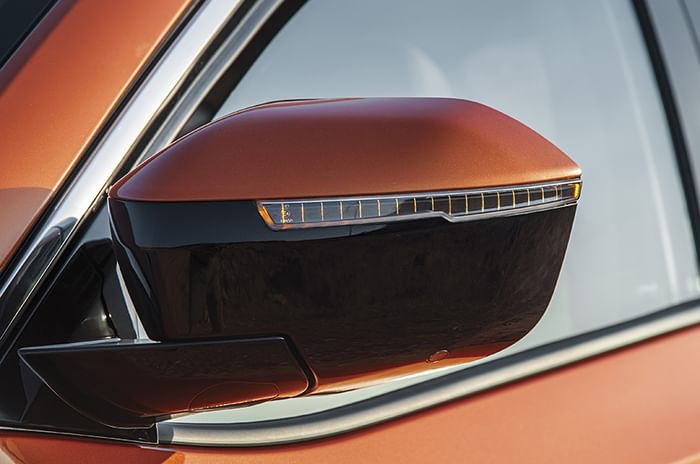
Both cars have big boots, but both will need you to heave your luggage over a large sill, and fumble around under the chassis to access the spare tyre. Both are five-seaters for now, but seven-seat versions will be arriving next year.
| Features | ||
|---|---|---|
| Hector | Harrier | |
| Auto climate control | Available | Available |
| Projector headlamps | LED | Xenon |
| Keyless entry & go | Available | Available |
| Auto headlamps & wipers | Available | Available |
| Touchscreen infotainment | 10.4-inch | 8.4-inch |
| Apple CarPlay/Android Auto | Available | Available |
| Cruise control | Available | Available |
| Heated wing mirrors | Available | Available |
| Parking camera | 360-degree | Rear view |
| Parking sensors | Front+rear | Rear |
| Tyre-pressure monitor | Available | NA |
| Rear AC vents | Available | Available |
| Powered tailgate | Available | NA |
| Powered front seats | Available | NA |
| Sunroof | Panoramic | NA |
| Onboard e-SIM/internet | Available | NA |
| Voice commands | Available | Available |
| Leatherette upholstery | Available | Available |
| Drive modes | NA | Available |
| Part-digital instrument cluster | NA | Available |
| Rear brakes | Disc | Drum |
| ABS/ESC/TCS | Available | Available |
| Airbags | 6 | 6 |
MOVING MASSES
Front-wheel drive and 6-speed manual gearboxes are how the power from these diesel SUVs gets to the road, and better yet, that power comes from the same 2.0-litre FCA ‘MultiJet II’ diesel engine (also in the Jeep Compass). Yet, despite these similarities, these cars drive very, very differently.
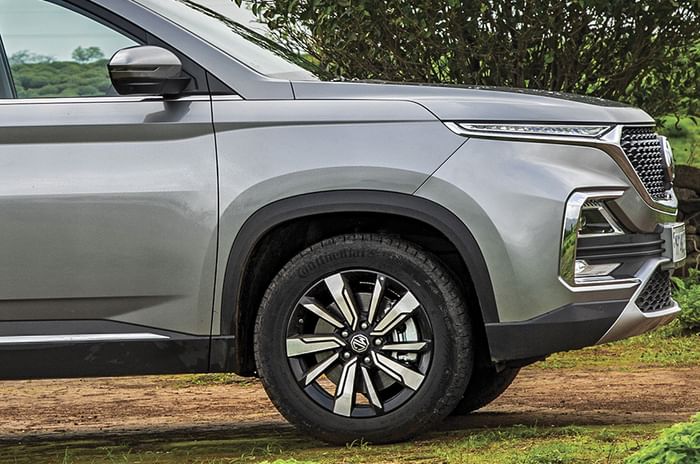
The Hector is more car-like, and that’s not just the driving position. The steering is light and the power delivery very linear; it even has the slicker gearshift. The MG has the higher power output – 170hp to the Tata’s 140 (torque is an identical 350Nm at 1,750rpm) – but its wider, thinner-spread powerband means you have to shift less, and responses low down are actually a bit better. The flip side is that it doesn’t feel quite as powerful as the numbers suggest, but once you’re on the go, it never feels wanting for more. The engine is also noticeably more refined at any engine speed.
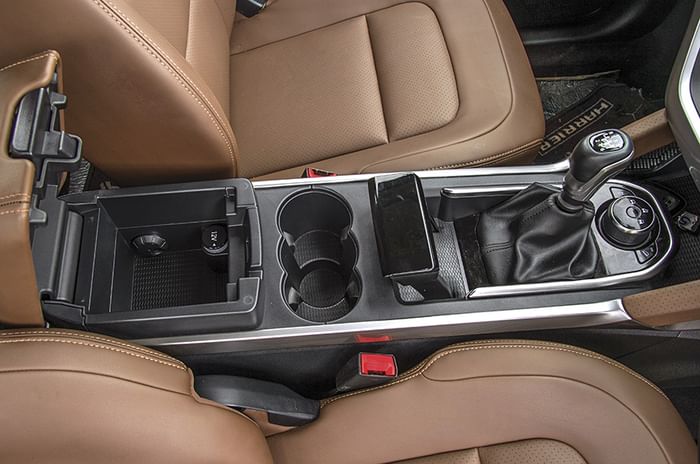
The Harrier’s engine sounds gruff, and it’s a sound that never quite goes away. It’s even more apparent when you realise it’s entirely the engine, as road and wind noise are better insulated than in the MG. Turbo lag is much more pronounced here, and at about 2,000rpm, the power slugs in with a huge whack and then it’s over before you know it. This mid-range punch can be quite addictive, but in the real world, you’ll find yourself shifting a lot more often. Pitted against our Vbox, the Harrier is a tad slower too, cracking 100kph in 12.24sec to the Hector’s 11.16sec, although in-gear acceleration is much closer, with the Tata being fractionally quicker.

Where the Harrier comes into its own is ride and handling, and here’s where that Land Rover-sourced chassis seems to have paid off, even though Tata has employed its own non-independent rear suspension. It displays unflappable composure at high speed and truly impressive body control in corners. When you factor in a steering that’s both light enough but also sharp and quick, you get an SUV that truly belies its size. Tata has been climbing the ranks when it comes to fun-to-drive cars, and this is a superb and unexpected example of it. It gives away a bit in terms of low-speed ride, which can be a bit firm, but it’s a forgivable amount.

The MG’s softer suspension throws up a cushier ride at low speeds, but there’s a fair bit of body movement that builds up the faster you go. Worse still is the lack of confidence you get at high speeds, be it while cornering or even making lane-change manoeuvres. The Hector is all over the place with an alarming amount of body roll as well as pitching over bumps, and the slow, disconnected steering doesn’t help in this regard. If your use is mainly in city traffic, this might not bother you too much, but overall, it’s the Harrier with its body control that is dynamically superior.
| Engine and Performance | ||
|---|---|---|
| Hector | Harrier | |
| Engine | 4 cyl, 1956cc, turbo-diesel | 4 cyl, 1956cc, turbo-diesel |
| Power | 170hp at 3750rpm | 140hp at 3750rpm |
| Torque | 350Nm at 1750-2500rpm | 350Nm at 1750-2500rpm |
| Gearbox | 6-speed manual | 6-speed manual |
| 0-20kph | 1.39s | 1.43s |
| 0-40kph | 2.86s | 3.34s |
| 0-60kph | 4.83s | 5.27s |
| 0-80kph | 7.66s | 8.43s |
| 0-100kph | 11.16s | 12.24s |
| 0-120kph | 16.06s | 17.64s |
| 20-80kph (in third gear) | 10.59s | 10.32s |
| 40-100kph (in fourth gear) | 11.88s | 11.31s |
THE ONE YOU WANT
For two cars that are so similar on paper, they couldn’t be more different in practice. The Harrier gives you that proper, tough SUV feel, it’s nice to drive and it rides very well too. It is, of course, not without its flaws, notably the drivetrain refinement and some key omissions on the equipment list. In the city, it’s more cumbersome to drive and could have been more user-friendly.
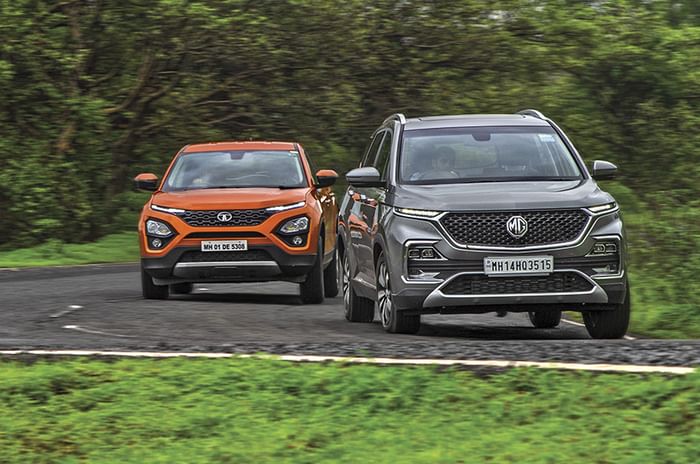
The Hector has its share of shortcomings too and doesn’t have the solid, rugged feel you’d expect from a large SUV. The exterior has some glaring panel gaps, and the overall dynamics, especially at high speeds, are poor. You won’t be wrong for picking the Harrier, but the fact is the MG scores more where it matters to the Indian SUV buyer. Firstly, it certainly has road presence though the styling may not be to everyone’s tastes. It has an edge over the Harrier when it comes to space and comfort, especially given the fact that a large proportion of owners use their SUVs as a chauffeur-driven urban transport. It has the better engine as well with more power and refinement. Throw in the feel-good features from the massive sunroof and connected touchscreen to smaller stuff like the ambient lighting, to even something as simple as the reclining back seat, and the Hector noses ahead of the Harrier, offering more bang for your buck along the way.
| Price and Verdict | ||
|---|---|---|
| Hector | Harrier | |
| Price (ex-showroom, Delhi) | Rs 16.88 lakh | Rs 16.55 lakh |
| Verdict | Lacks a tough SUV feel but delivers what buyers want. | Gets the basics right but lacks in a few important areas. |
| Rating | 8/10 | 8/10 |
Click here for Tata Harrier prices, reviews, images, videos and more
Click here for MG Hector prices, reviews, images, videos and more
























